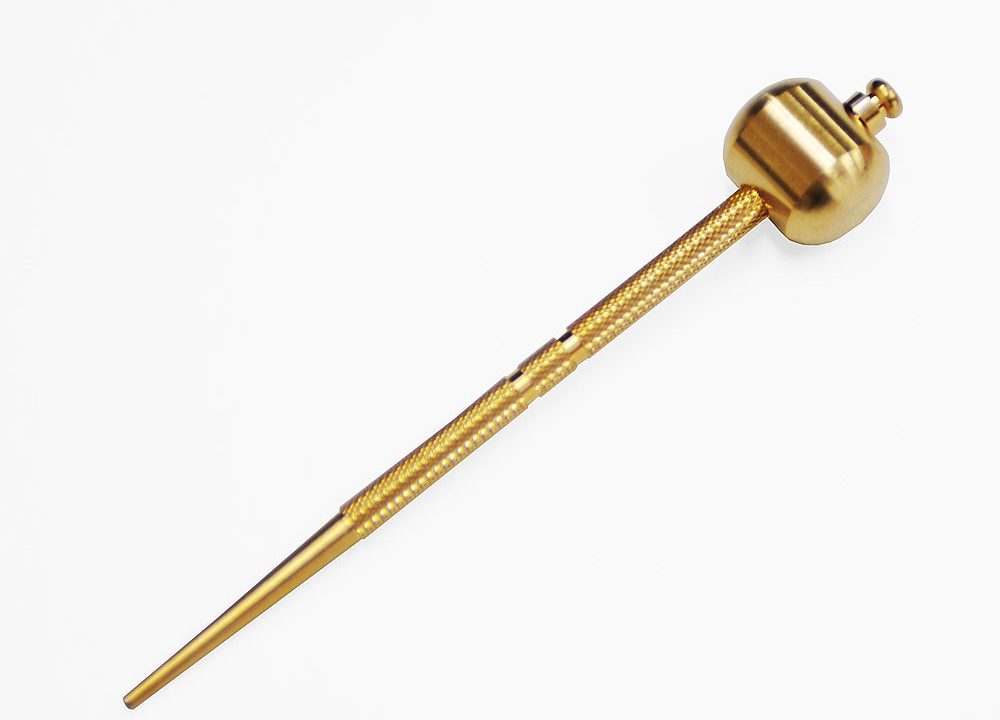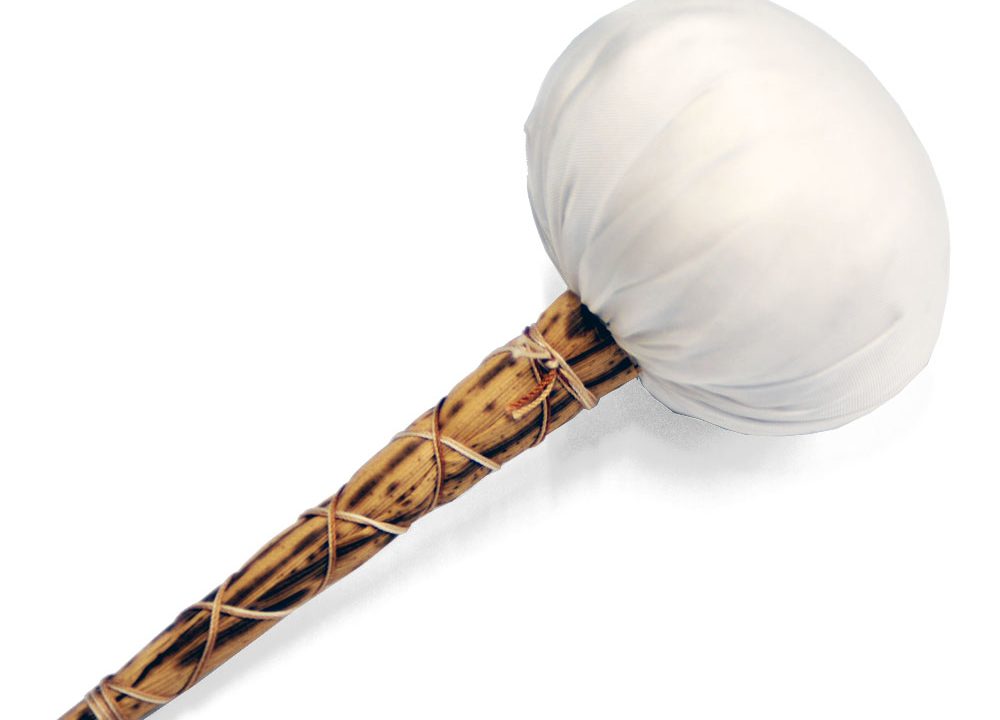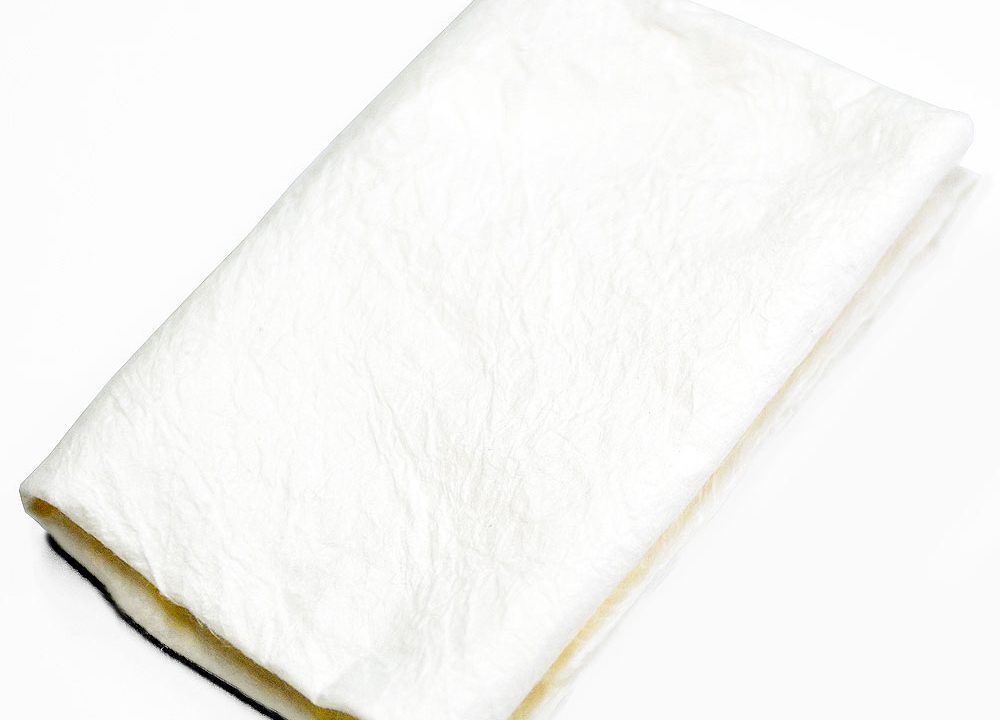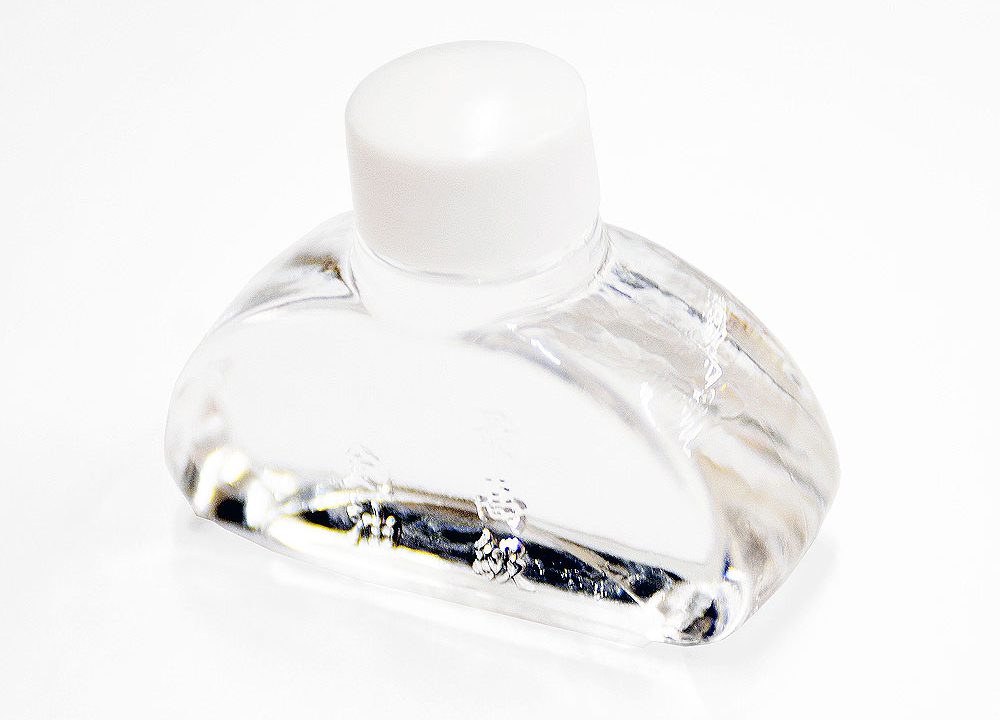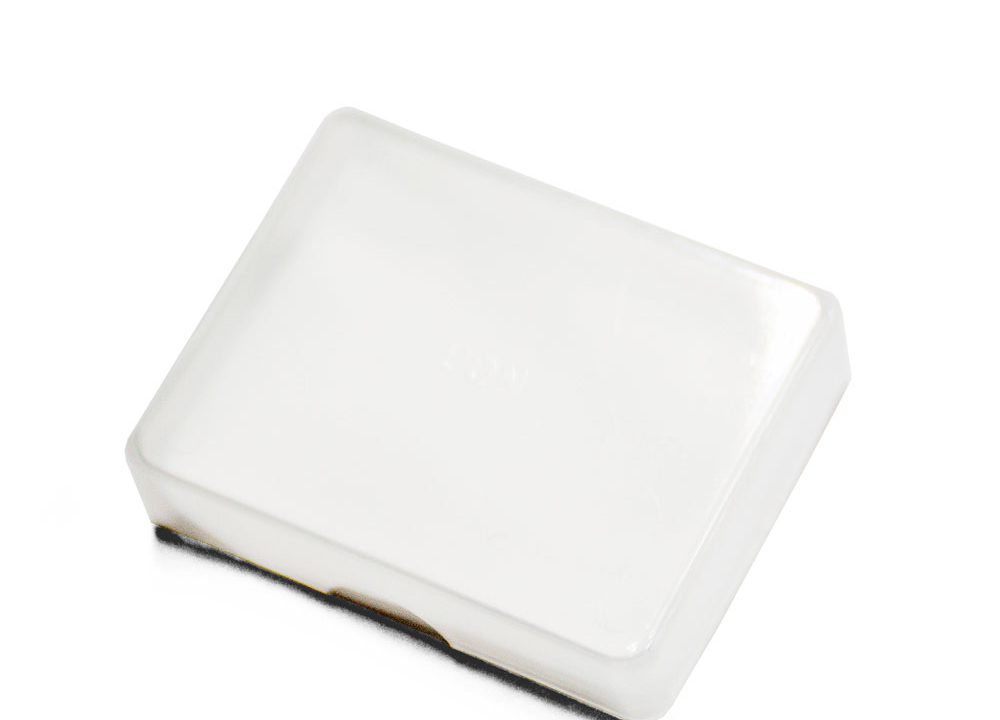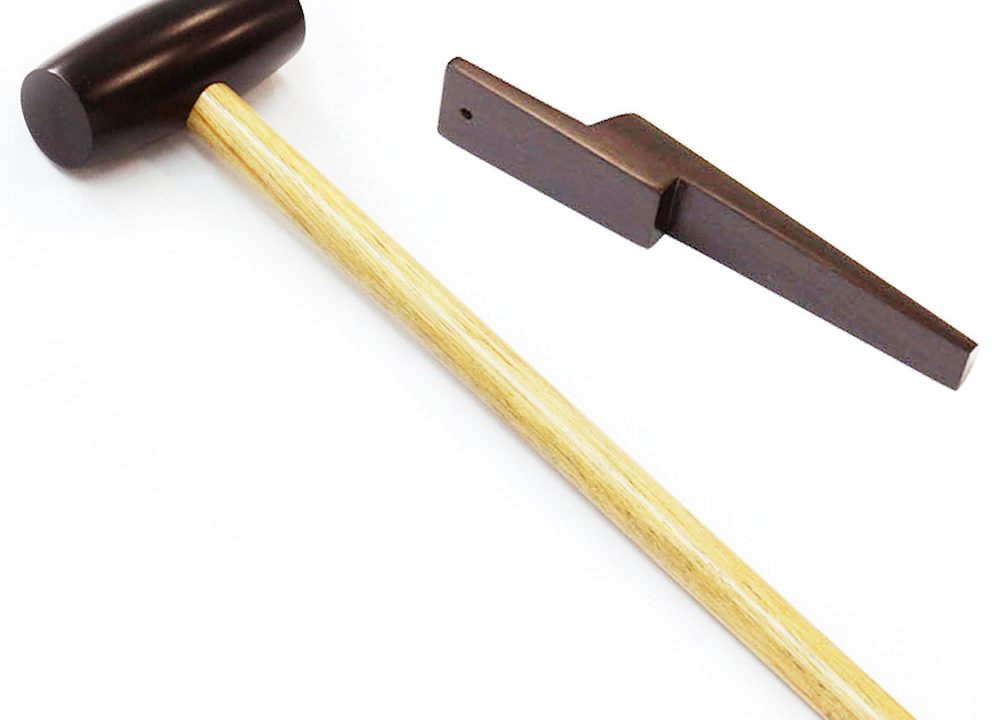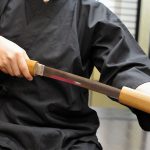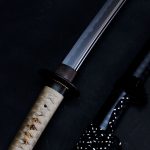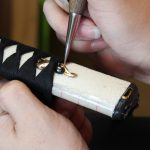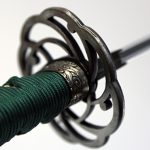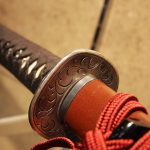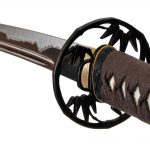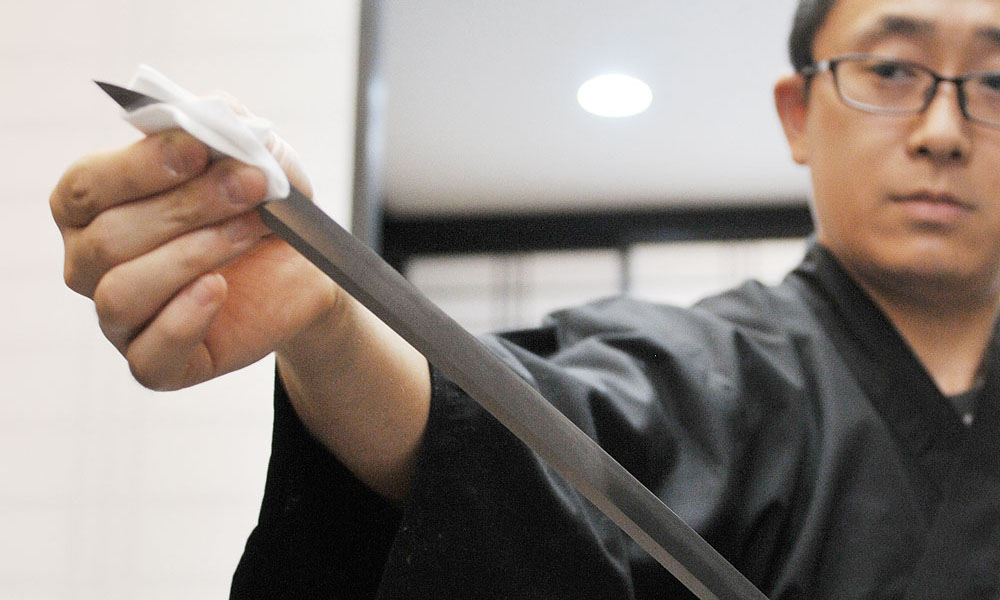
When looking after your sword, the main objective is to prevent the blade from oxidizing and rusting. Therefore, it is necessary to thoroughly remove any stale oil from the blade and replace it entirely with new oil, making sure that the whole blade is covered and not leaving any spots ungreased.
This article will show you how to dismount a katana’s blade entirely and perform a full maintenance.
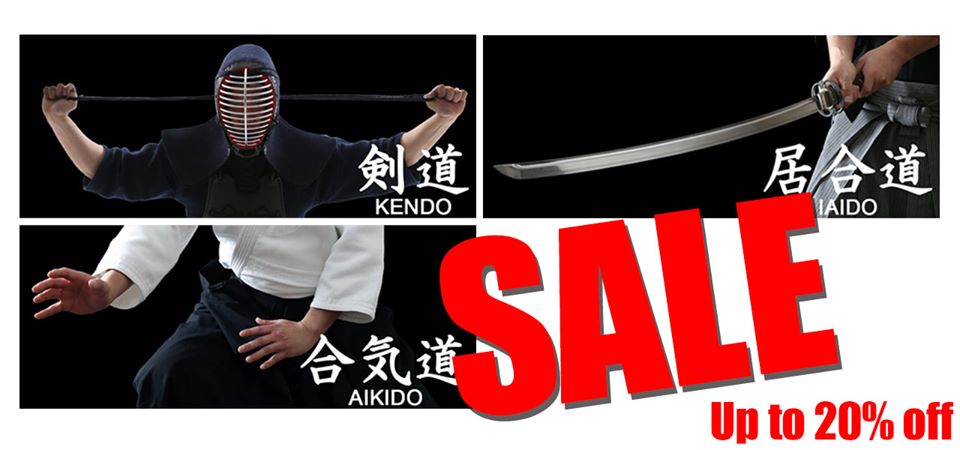
How often to perform maintenance
How often your perform maintenance depends on what sort of blade you have and what you use it for. If you have an iaito from Japan that is made from Zinc/Alluminium you do not need to use uchiko powder because it will not rust. If you use it for iaido then you should oil it as and when is needed. However if it is for decoration only then once every two months should be fine.
For shinken or ferrous swords this is the same, but you also use uchiko powder. Any sword used for tameshigiri (practice cutting) should be checked and cleaned after cutting before it is returned to the saya (sheath). This is because whenever you cut you will pick up bits of detritus and particles from the medium you are cutting through.
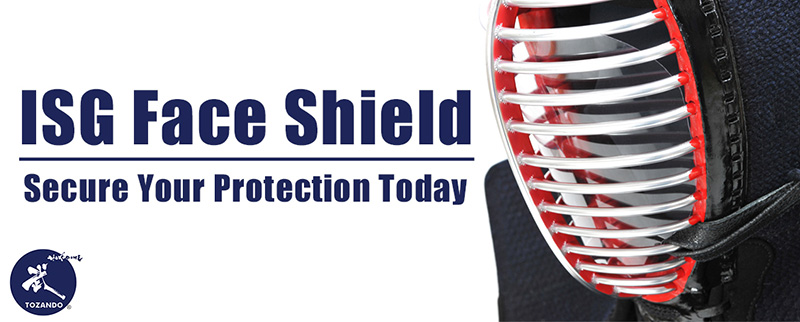
Maintenance tools
Genuine Japanese swords are generally polished using more than 10 different types of grinding/polishing stones making the surface of the blade very smooth. Because of this, any dirt or dust that may be stuck on your Nuguigami or Abura-nuguishi might inflict damage to the blade, thus it is of utmost importance that you keep your maintenance tools clean and thoroughly inspect them before using them to maintain your sword.
1. Mekugi-nuki: A tool used to remove the bamboo peg (mekugi) holding the blade in the tsuka (haft); usually made of brass or bamboo.
2. Uchiko: A finely ground whetstone powder for cleaning the blade surface. First, wrapped in Japanese hand-made paper called yoshino-gami, then rewrapped with cotton or silk cloth. When you pat it against the surface of the blade, the fine powder comes through the cloth and sticks to the surface of the blade. If you are looking after an iaito with a Zinc/Alluminium blade you do not need to apply uchiko powder.
3. Nuguigami: High quality thick Japanese paper that has been thoroughly wrinkled to soften and remove coarse and dusty elements, used for wiping the blade surface. There are two reasons for using nuguigami to wipe the blade; Firstly, it preliminary removes any old oil and secondly, it removes any uchiko still attached to the surface of the blade. Nowadays it’s becoming more common to use neru (flannel cloth), however when using a flannel, please remember that the fabric must be thoroughly washed and dried before being used.
4. Abura: Oil used to prevent oxidation and rust, also commonly called choji-yu (clove oil).
5. Abura-nuguishi: Paper used to spread oil over the blade surface. A piece of wiping paper or flannel will do.
6. Kizuchi: A wooden hammer used to dislodge the blade from the shirasaya (plain mounting) or koshirae (decorated actual mounting) in the case the blade is firmly lodged inside and can’t be dislodged by normal means, only used if necessary.
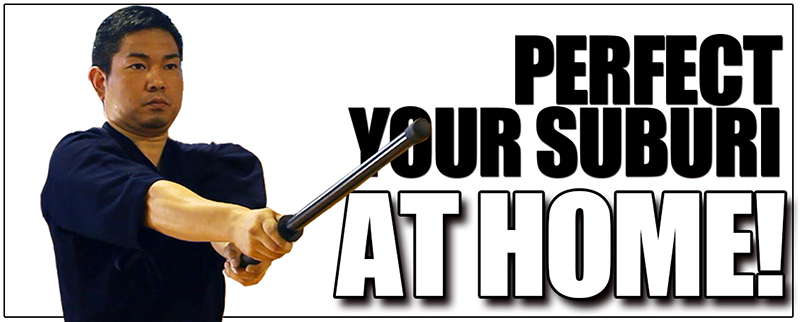
How to maintain the sword
1. Lay down the mounted sword sideways on the ground, if necessary, use a mekugi-nuki to push the mekugi out in preparation for removing the tsuka.
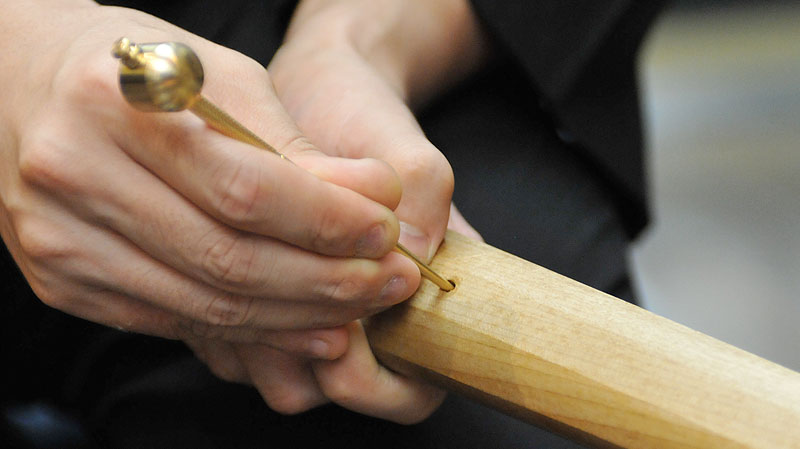
2. Pull the blade out of the saya. If the blade for some reason should be stuck inside the saya and can’t be pulled out easily, please grip the saya around the koiguchi and press hard, that way the koiguchi will loosen up and you will be able to draw the sword.
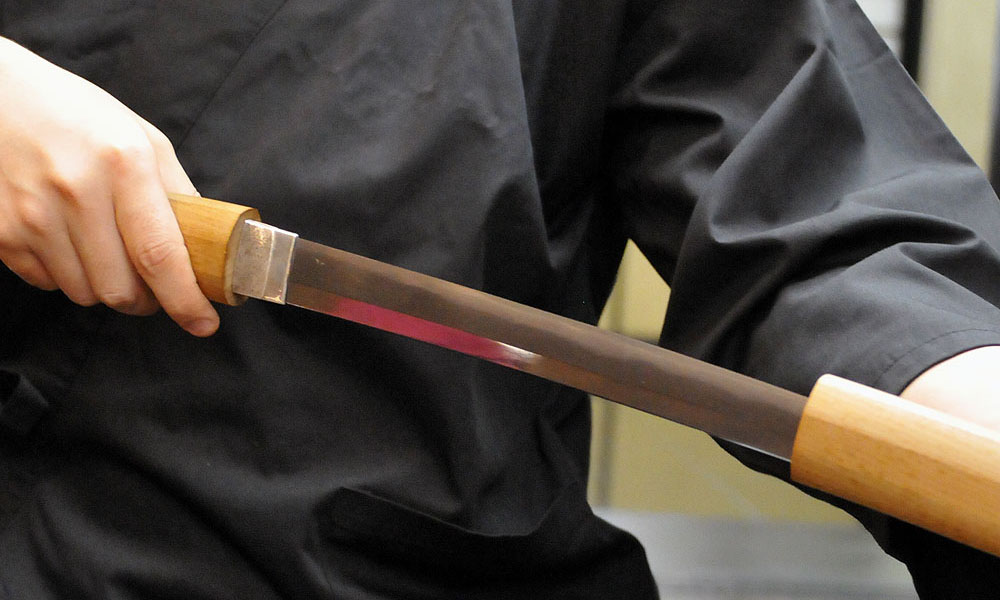
3. To remove the tsuka, hold its end with the left hand on the side where the back of the blade is fit, and keep the blade in a slightly angled upright position. Use your right fist to hit your left wrist lightly a few times.
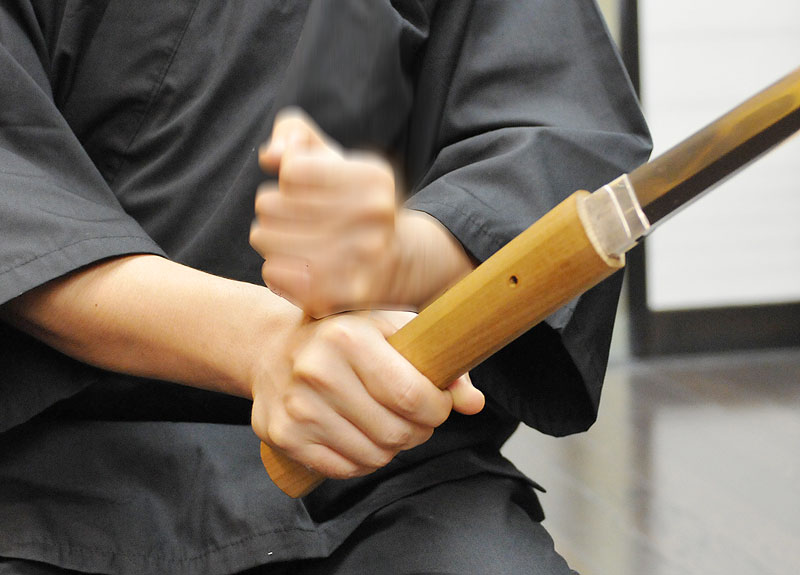
The nakago (tang) will eventually become slightly loose inside the tsuka, so keep repeating until the nakago comes out naturally. If the nakago is stuck and doesn’t come out easily, you can try to gently hit the tsuka a few times with a wooden mallet to dislodge the nakago from inside the tsuka When there is enough room to grasp the nakago, the blade may be pulled out of the tsuka with your right hand. Be careful not to hit your left wrist or the tsuka too hard as you might damage it and there is also the danger of blades with short nakago, such as a tanto (short-sword or dagger), bouncing out of the tsuka entirely. Therefore, the initial impact must be light, just to check how tightly the nakago is fixed in the tsuka.
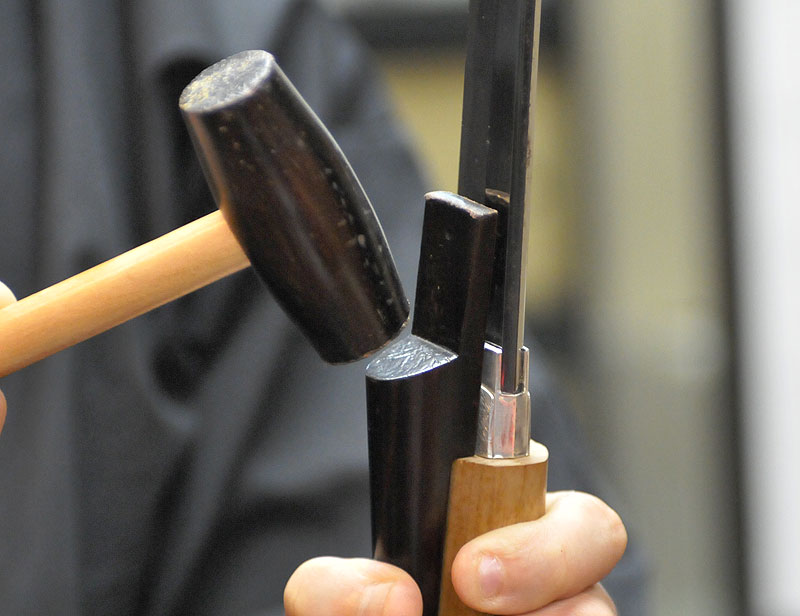
Then, the force of subsequent blows can be adjusted accordingly. After the blade is taken out of the tsuka, the mekugi removed from the tsuka might have to be replaced depending on if it shows signs of wear or not.
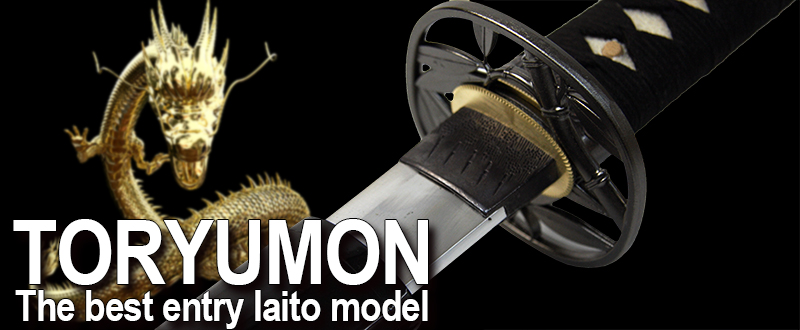
4. If the sword is mounted in a full koshirae, you should remove the blade from the tsuka before removing the seppa (washer above and below the hand-guard), tsuba (hand-guard) and habaki (blade collar to prevent the sword falling out of the saya) in order. If the habaki is stuck, lightly hitting the end of the nakago or the back of the habaki after covering it with a piece of cloth for protection with a wooden mallet might help loosen it up.
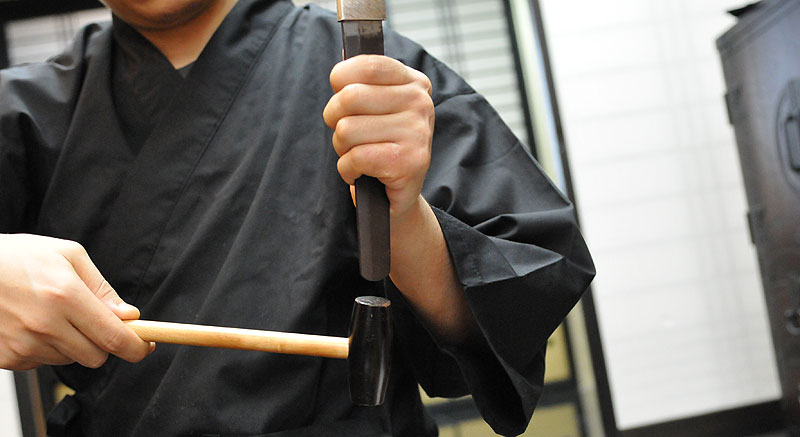
5. The wiping process requires two pieces of nuguigami. The initial one removes the old oil and dust, which is called preliminary cleaning. First place the cleaning paper on the back of the sword and fold it into halves toward the cutting edge. Then, hold the paper-covered blade from above the back so that the thumb and the forefinger gently grip each side of the cutting section from above the paper. Without exerting too much force, to wipe the blade upwards in a single motion, starting from the base where the habaki was.
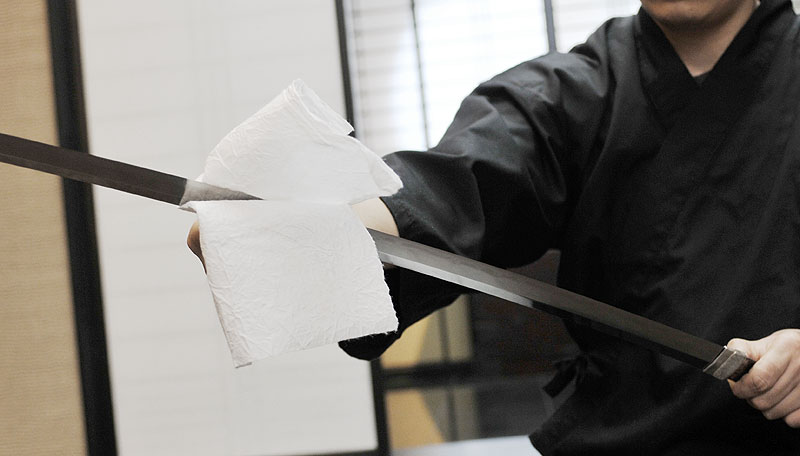
When the cleaning paper reaches the kissaki (sword tip), be particularly careful in wiping lightly.
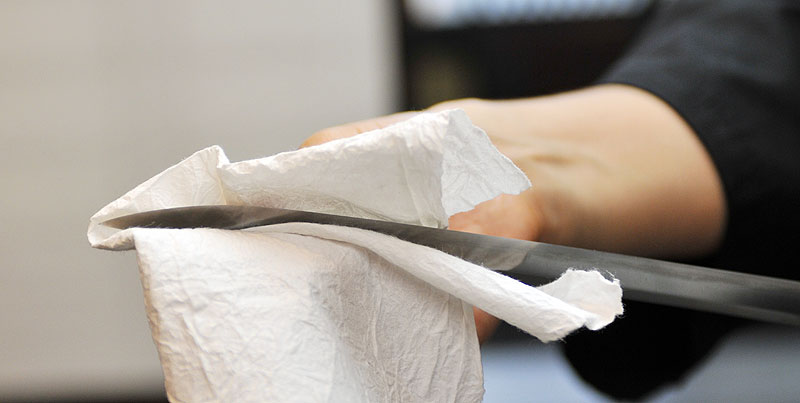
No pressure or friction must be put on the tip. When expertise is attained, the wiping action can also be made both ways, up and down. However lack of experience can result in the cutting of the paper or even fingers and thus it must be strictly avoided.
6. After the preliminary cleaning, we will powder the blade. The powdering starts from the base upwards towards the tip on the sashi-omote (the “front side” when the sword is sheathed, in other words, the right side of the blade when you hold the sword in front of you with the blade facing away from yourself) side, uniformly and lightly pat the powder onto the blade using your uchiko to cover the blade surface. Then turn the blade over and start patting from the tip downwards toward the base.
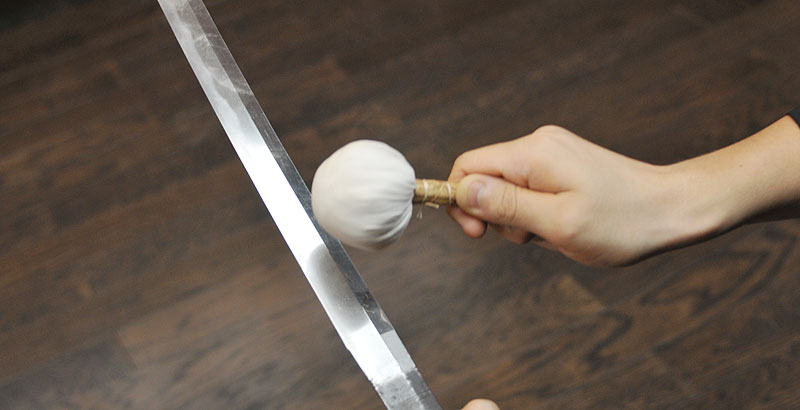
7. Once you are done, use the second sheet of nuguigami paper to wipe the powder off the blade surface in the same manner as during the preliminary cleaning phase. This is called the final cleaning. If the blade does not become clean after compleating the wiping process, you might have to reapply the uchiko and do another final cleaning. It should be noted that the two kinds of wiping paper used in this process must not be interchanged and should have distinct purposes – preliminary and final.
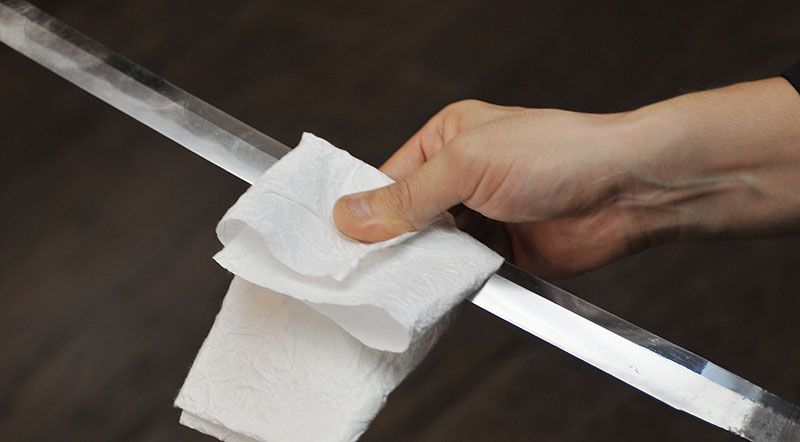
8. When the surface is thoroughly clean, check for the presence of rust, flaws and other damage. If there is no problem with the blade, without putting back the tsuka, habaki and other attachments, the blade alone should be sheathed and put back into the saya for the time being.
9. Next we fold a piece of abura-nuguishi or flannel cloth, into a 3cm x 6cm size and soak it in some fresh choji-yu.
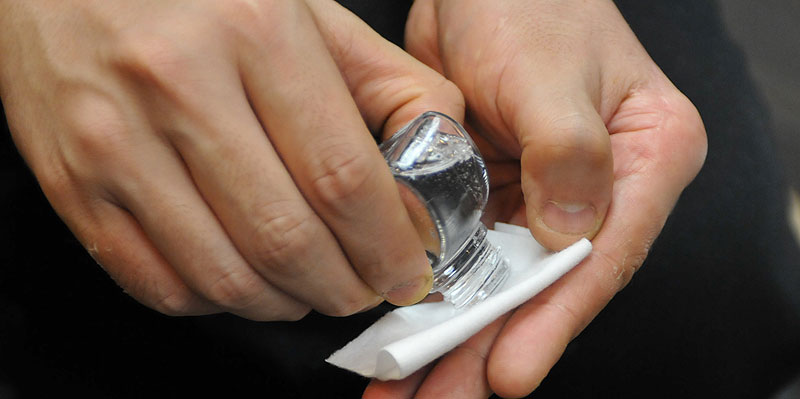
When the paper is ready, you can pull the blade out of the saya again. While holding it in your left hand, put the oiling paper on the back for the blade and use the same method to spread the oil evenly along the blade as described in the wiping process. To make sure the blade surface is thoroughly covered with oil, repeat the same procedure a few times.
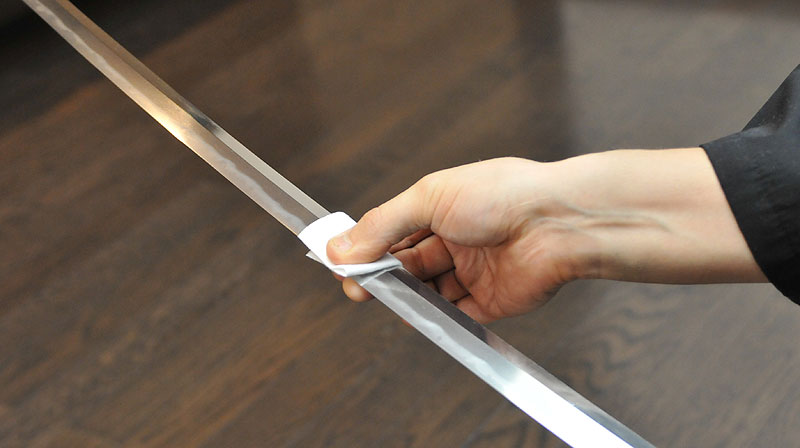
Just as when wiping, the handling of the sword as well as the oiling paper must be done with utmost care. The paper should contain the just the right amount of oil so that no excess oil will overflow and harm the saya and koshirae after reassembling the sword. The oil must be spread thinly and evenly along the whole length of the blade.
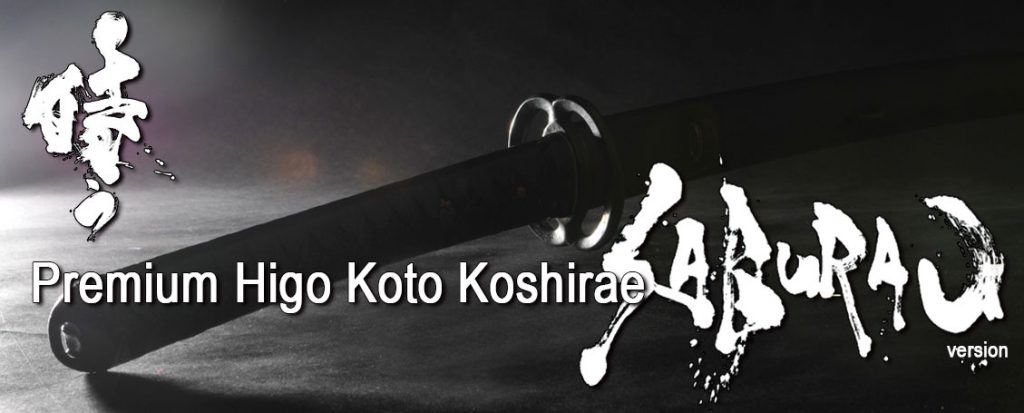
10. Once you are done oiling the blade, put the habaki back and once again temporarily return the blade to the saya. If your sword is mounted as a koshirae, you can now put on the seppa and tsuba again.
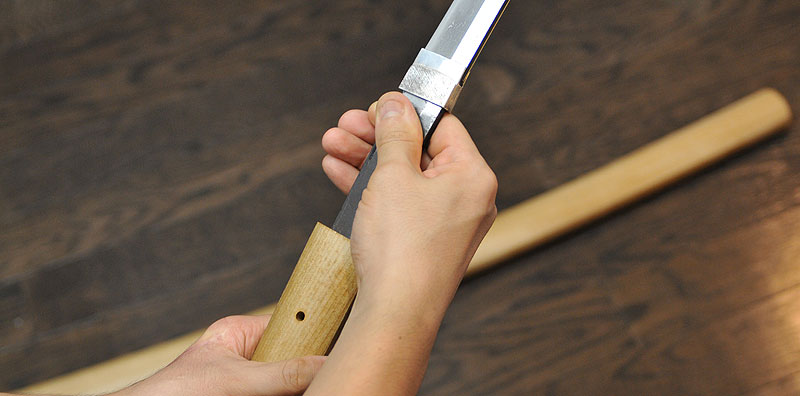
Once you are ready, draw the blade out of the saya and while holding the nakago with your right hand in an almost upright position, pick up the tsuka with your left hand, and slowly slide the nakago back in the tsuka. Keep holding the tsuka with your left hand and hit the end of the tsuka lightly with the palm of your right hand, so that the nakago settles firmly in the tsuka.
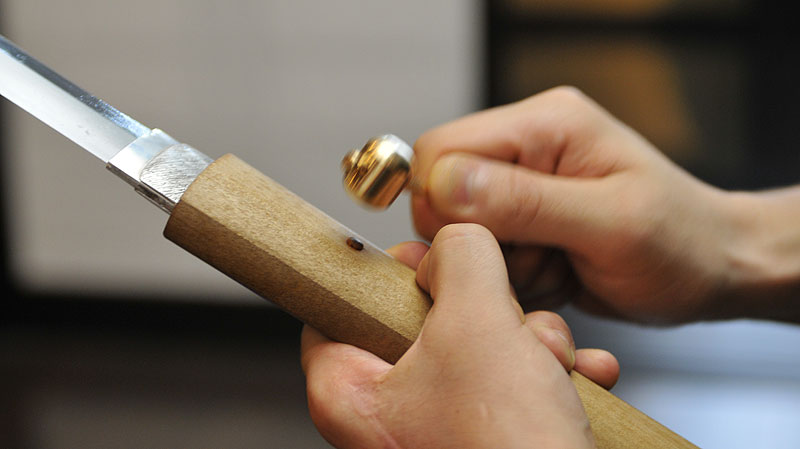
When the nakago is fixed in its perfect position, insert the mekugi and pass the sword to your right hand, pick up the saya and slowly slide the blade with the cutting edge facing up and taking care so that the back of the sword follows the shape of the saya as it slides in.
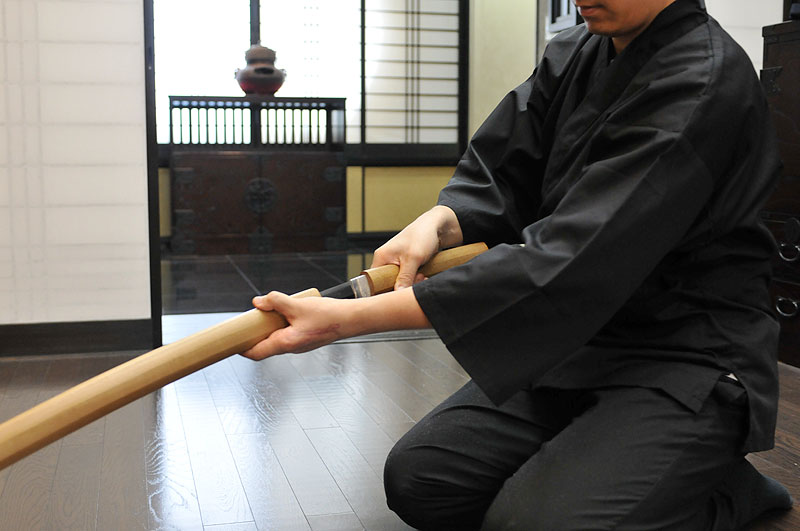
There you have it.That is a complete process for dismounting and thoroughly cleaning your Japanese sword.
 | Did you like what you've just read? Check this out. |



